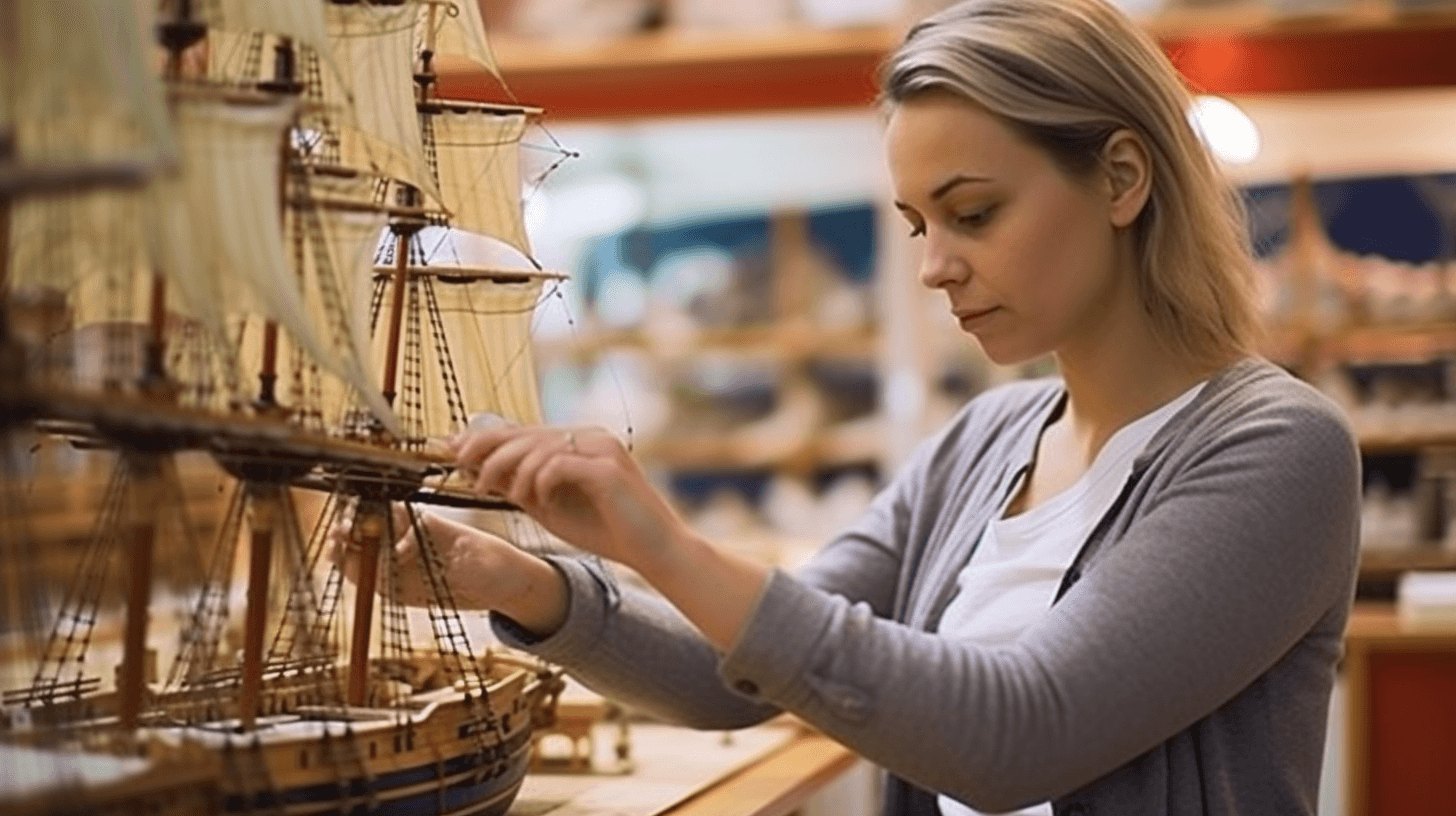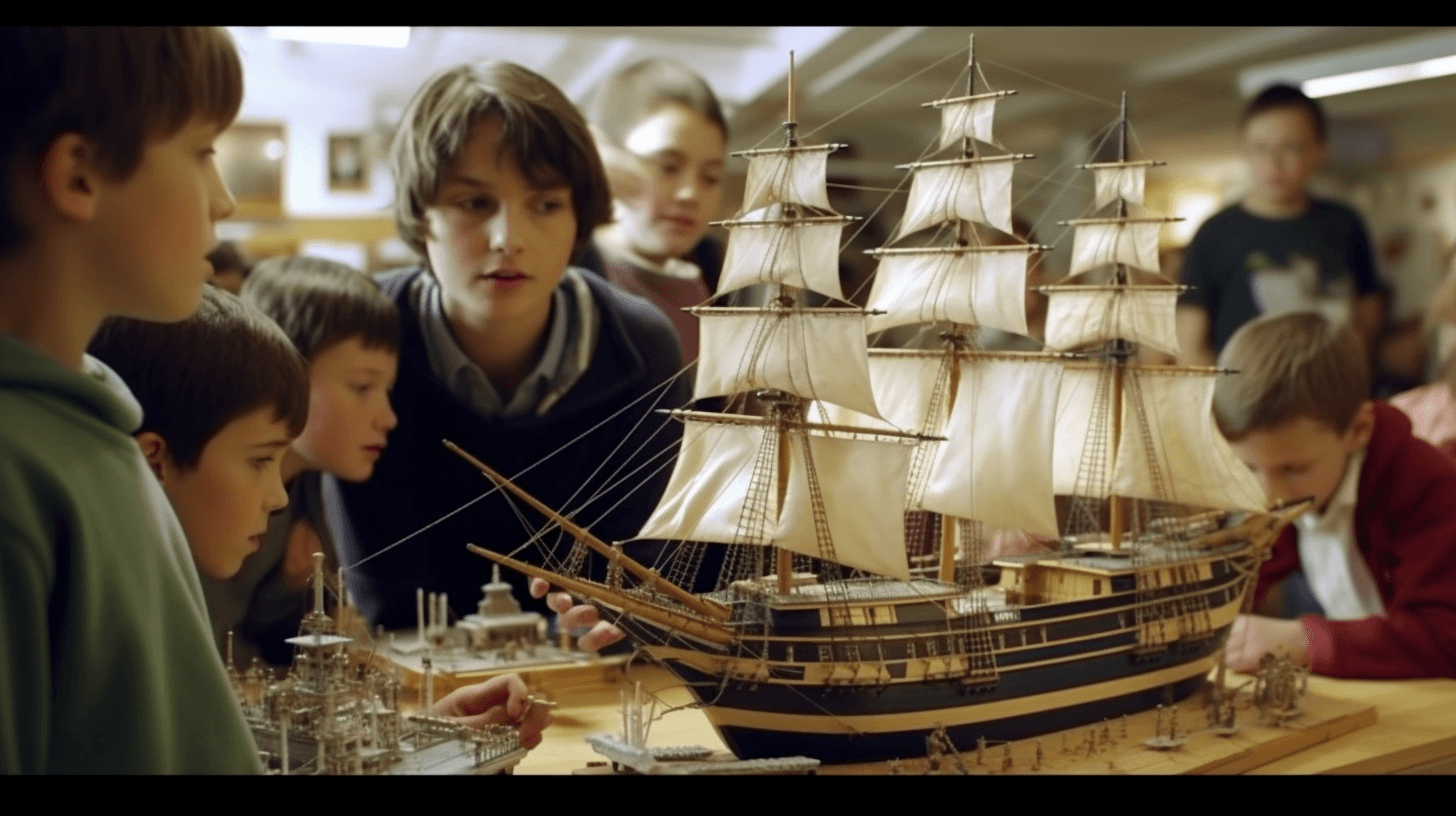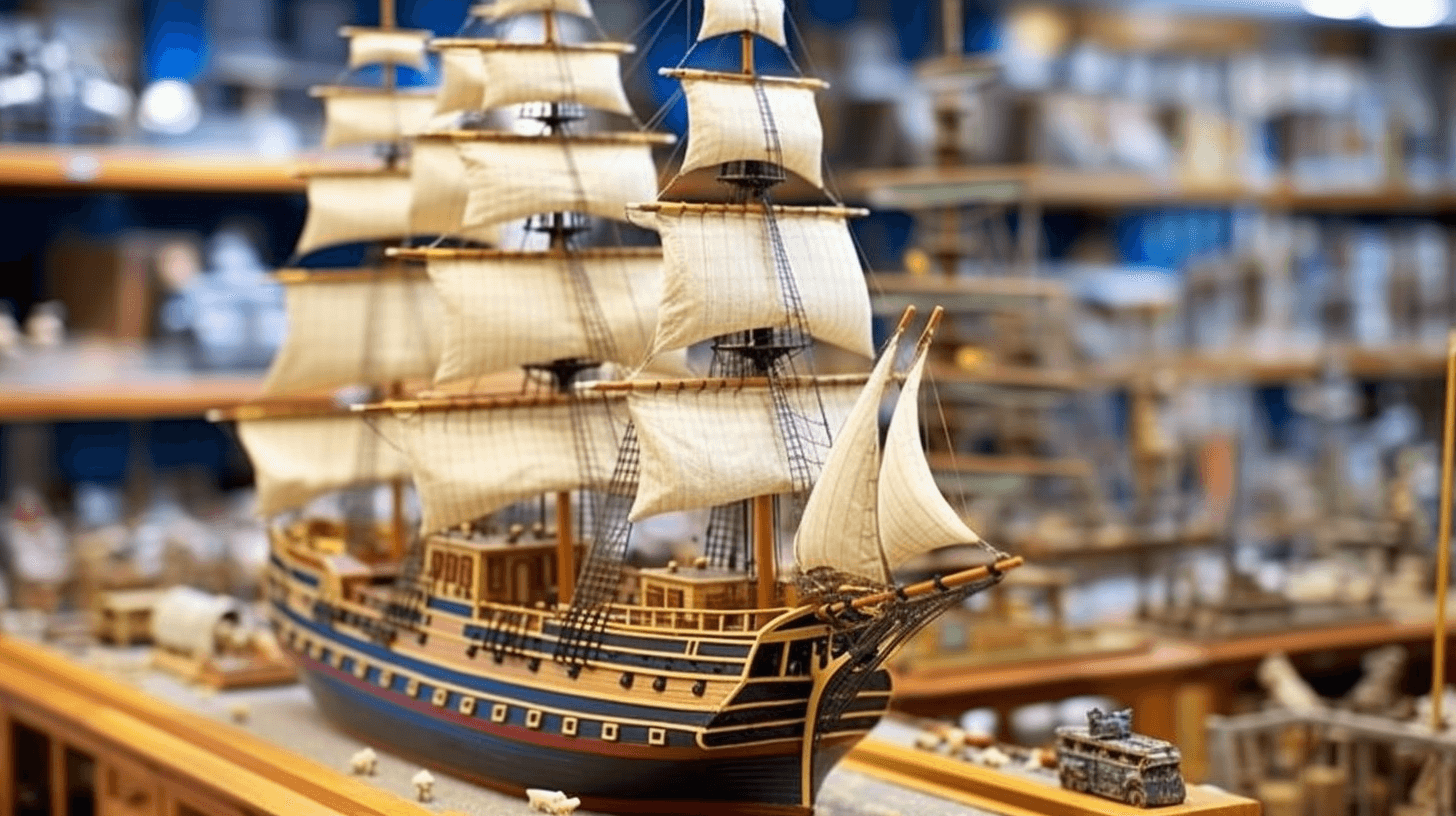1st Apr 2024
The History and Significance of Model Ships in Maritime Museums
Model ships have played an essential role in preserving the rich maritime history and experiences on the high seas. As miniature representations of real-life maritime vessels, these exquisite models embody not just exceptional craftsmanship but also mirror crucial aspects of the seafaring tradition. The Australian National Maritime Museum's store offers a diverse collection of model ships and other maritime-themed souvenirs that can ignite your passion and curiosity in understanding this remarkable part of human history.

Model shipbuilding is an art form with a history that dates back thousands of years. In ancient Egypt, pharaohs were often buried with model ships inside their tombs to accompany them through their journey in the afterlife. The Greeks and Romans employed model ships for their religious offerings and used them in the study of naval architecture. Over time, these intricate models took on various forms, from carved wood and ivory to crafted metal and delicate glass, and evolved to serve different functions.
Today, you can find splendid collections of model ships in maritime museums across the globe. They provide visitors with an insight into the rich naval history and the evolution of ship design, engineering, and technology. Model ships foster an understanding of maritime events and expeditions that have shaped human exploration, trade, and warfare. Be it the Royal Navy’s fleet of ships, the exploration vessels of famous navigators like James Cook, or the merchant ships that established trade routes, these models encapsulate historical stories that educate generations about our seafaring past.
The Australian National Maritime Museum prides itself on a diverse collection, including 17 model ships classified as cultural heritage. The importance of these model ships transcends their visual appeal, as they also serve as important resources for academic researchers and enthusiasts keen on comparing historical ship designs and learning about maritime history.
In this blog series, we will delve into the history of model ships, the craftsmanship that goes into creating them, and their significance in maritime museums. We will discuss how these model ships connect past, present, and future seafaring generations and continuously inspire a sense of wonder and love for maritime heritage. Visit the Australian National Maritime Museum store to explore their impressive selection and perhaps even begin your own model ship collection.
The Rich Tradition of Model Shipbuilding
Model shipbuilding has a long and storied history that spans thousands of years and countless civilizations. From ancient Egyptian pharaohs using model ships as burial accompaniments to wealthy European merchants commissioning scale replicas, different cultures have contributed tremendously to the evolution of this unique art form. Today, model ships serve various purposes, ranging from educational tools to collectors' items, reflecting both the incredible workmanship and our shared fascination with maritime history.
In this article, we explore the rich tradition of model shipbuilding and how maritime museums like the Australian National Maritime Museum use these exquisite artifacts to educate, connect, and inspire people around the world.

Origins of Model Shipbuilding
Although it is impossible to pinpoint the precise beginnings of model shipbuilding, relevant artifacts date back to at least the Egyptians, nearly 5,000 years ago. These ancient models, often made from wood, were ceremoniously placed in pharaohs' tombs, symbolizing the joining of the soul and body for safe passage through the afterlife. Egyptian ship models were easily recognizable with their slender, elegant hulls, and unique sail designs.
As civilization progressed, the Greeks and Romans began creating model ships as votive offerings to their deities, showcasing their gratitude and devotion. Roman ship models displayed at museums today often reflect their interest in emulating realistic sailing vessels with detailed hulls, sails, and rigging. The advent of Roman and Greek model ships marked a milestone in the evolution of model shipbuilding, as it signaled the transition from purely ceremonial use to representation and documentation of genuine naval vessels.
Expansion of Purpose and Design
While model shipbuilding initially had religious and burial contexts, the art form's purpose expanded throughout the following centuries. Shipwrights started using models as visual aids to communicate design ideas with naval architects, royalty, and merchants. During the Age of Sail from the 16th to 19th centuries, model shipbuilding hit its stride, with shipbuilders showcasing exceptional skill and craftsmanship in producing detailed, accurate models made of wood or bone.
European countries such as Britain, France, and the Netherlands saw an increase in demand for model ships, leading to professional model shops. One example is the famous Bassett-Lowke company in Britain, known for producing high-quality ship models and other nautical items. During this time, shipwrights crafted intricate models called Admiralty models, known for their immaculate detail. In addition to being conversation pieces, these models were also valuable as historical records of important vessels from a particular era.
Model Ships as Trophies and Collectibles
As model shipbuilding developed into a prestigious art form, it started to attract monarchs, aristocrats, and wealthy merchants looking to flaunt their power and wealth through ornate scale models. Commemorative ships or presentation models became popular gifts among the elite, symbolizing naval victories or successful trade ventures. Collecting model ships turned into a status symbol, and the practice soon spread throughout Europe and beyond.
Today, there continues to be a thriving collectors' market for model ships, with enthusiasts and connoisseurs seeking out historical models to add to their collections. The Australian National Maritime Museum's collection of model ships now includes a range from simple children's toys to the meticulously crafted pieces worthy of the most discerning collector.
Educational Importance in Maritime Museums
Modern maritime museums like the Australian National Maritime Museum use model ships to educate visitors about the rich maritime heritage and its impact on human history, from exploration and trade to warfare and scientific discovery. Detailed models help museum-goers visualize ancient and modern vessels, providing a unique perspective on ship design and engineering as well as how they evolved through the centuries.
The Australian National Maritime Museum also places a high value on its model ships' historical and educational impact. Some models like the SS South Steyne and SS Waratah serve as important resources for researchers and maritime enthusiasts, allowing them to study historical ship designs and engineering practices from bygone eras. Visiting a maritime museum is an engaging and immersive way to capitalize on our innate curiosity about the sea and gain invaluable insights into the development of naval technology and the maritime industry.

Conclusion
Model shipbuilding is an art that bridges the gap between past and present, allowing us to better understand our seafaring heritage and appreciate human ingenuity. Maritime museums like the Australian National Maritime Museum play a crucial role in preserving, displaying, and educating the public about these stunning artifacts and their importance in the context of maritime history. The next time you visit the museum or
browse our online store, take a moment to appreciate these model ships' rich history and unrivaled craftsmanship—a true testament to the passion and skill of centuries of shipwrights and sailors.
FAQ: Model Ships and Maritime History
1. What is the significance of model ships in maritime history?
Model ships have played a crucial role in preserving and reflecting the rich maritime history and experiences on the high seas. These miniature representations of real-life maritime vessels not only exhibit exceptional craftsmanship but also mirror crucial aspects of the seafaring tradition. They offer insight into the evolution of ship design, engineering, and technology, as well as the exploration, trade, and warfare that shaped human history.
2. What is the history behind model shipbuilding?
Model shipbuilding has a long and storied history that dates back thousands of years. Ancient civilizations like the Egyptians used model ships as burial accompaniments, while the Greeks and Romans employed them as votive offerings and for studying naval architecture. Over time, model ships evolved in design and purpose, transitioning from religious contexts to visual aids for communicating ideas and representations of genuine naval vessels.
3. How did model ships become collectible items?
During the Age of Sail, model shipbuilding gained prominence, with shipwrights showcasing exceptional skill in producing detailed, accurate models made of wood or bone. European countries saw an increase in demand for model ships, leading to professional model shops. As the art form developed, model ships became collectible items sought after by monarchs, aristocrats, and wealthy merchants. Commemorative ships and presentation models symbolized naval victories and successful trade ventures, turning collecting model ships into a status symbol.
4. What is the educational importance of model ships in maritime museums?
Modern maritime museums like the Australian National Maritime Museum use model ships to educate visitors about maritime heritage and its impact on human history. Detailed models help visitors visualize ancient and modern vessels, providing unique insights into ship design, engineering, and historical practices. Some model ships serve as valuable resources for researchers and maritime enthusiasts, allowing them to study historical ship designs and engineering techniques.
5. What can I expect from the Australian National Maritime Museum's model ship collection?
The Australian National Maritime Museum prides itself on a diverse collection, including 17 model ships classified as cultural heritage. The collection spans from simple children's toys to meticulously crafted pieces worthy of collectors' attention. Visiting the museum or exploring their online store offers the opportunity to appreciate the rich history and craftsmanship behind these model ships, connecting with the seafaring heritage that continues to inspire wonder and fascination.


